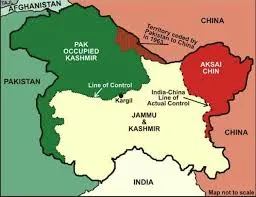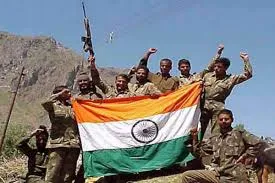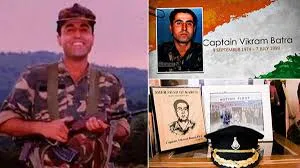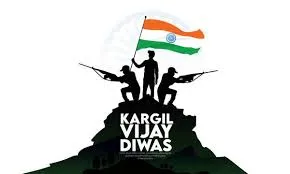Introduction
Every Indian celebrates Kargil Vijay Diwas with great pride and patriotism, for this was the day when victory was obtained over Pakistani forces in the Kargil War in 1999. The day, July 26th, is observed yearly as a gesture of respect toward the bravery and sacrifices of Indian soldiers for recapturing the commanding heights of Kargil. In this article, we share reasons to celebrate Kargil Vijay Diwas, piece together the events of the Kargil conflict, and celebrate the heroes who made this victory possible.

Historical Context of Kargil Vijay Diwas
A Small Introduction to the Kargil War
Among the gigantic conflicts between India and Pakistan that happened in 1999 was the Kargil War. It burst into action as an aftermath of the infiltration of Pakistani soldiers and militants into Indian territory. This was quite a difficult military operation taken up by any army anywhere in the world, as it was conducted on the rugged terrain of the Kargil district in Jammu and Kashmir. The conflict commenced in May 1999 when Pakistani intrusion was detected in the Kargil region, occupying key positions along the Line of Control.
Why Kargil Was Started: Unveiling the Causes of the 1999 Conflict
Introduction to the Kargil War
The Kargil War between India and Pakistan, from May to July 1999, was one of the most significant events in South Asian history. It has more popularly come to be referred to as the Kargil Conflict. The military engagements between the two nations were striking; an added flavor is high-altitude warfare. To understand completely why Kargil was started, it becomes absolutely necessary to get into the root causes, strategic interests, and geopolitical dynamics that resulted in this confrontation.
Historical Context of India-Pakistan Relations
Background of the India-Pakistan Conflict
The history of relations between India and Pakistan has been fraught with tension ever since the partition of British India back in 1947. There have been a number of wars between the two countries, which have been largely over the Kashmir region, still considered a disputed area. This conflict in Kashmir is based on historical, religious, and political differences that, therefore, dictate activities between the two nations.
Historical Disputes and Ongoing Tensions
The Kashmir conflict began when the princely state decided to join India in 1947. This marked the beginning of the first Indo-Pakistani war. Since then, there have been a number of skirmishes and wars between the two countries over the disputed land. The reasons for the conflict, however, were never resolved through these skirmishes and wars, and different attempts at ego-handling and conflict resolution have only resulted in periods of escalation.
The Strategic Importance of Kargil
Geographic Significance of the Kargil Area
Kargil District is located in the Indian-administered union territory of Ladakh. Its location along the LoC, which represents the de facto border between India and Pakistan in Kashmir, makes it highly strategic. The altitude of Kargil gives any occupying military force an advantageous vantage point to conduct operations and control principal routes and communication lines.
The Line of Control and its Role
The LoC was born, along with heavy militarization, following the 1971 Indo-Pakistani war. The control and demarcation of the LoC had been under contest, as both sides claimed a different piece of land. Given its strategic location along the LoC, the Kargil area emerged as a main point of military activities and disputes.

Strategic Interests in the Kargil Area
That apart, the side that wins control over Kargil gets access to vital supply routes and holds the key to dominating large areas of the region. The commanding high-altitude positions allow for spotting and communications. This is the reason why Kargil became a bone of contention between the two nations, with India and Pakistan keen to demonstrate their superiority over the area.
Why Kargil war Was Started – Key Reasons
Territorial Ambitions and Claims
One of the major causes of Kargil’s initiating was Pakistan’s territorial ambitions. Pakistan desired to change the status quo by acquiring parts of Kargil, with the aim of challenging India’s stand and altering the dynamics of Kashmir’s conflict. This was impelled by an impulse to lay a territorial claim and shift the balance in its favor.
Insurgency and Infiltration Issues
The insurgency and infiltration problems were also propagated to the Kargil war. From the Pakistani side, military and the intelligence-sponsored insurgent groups and militants for infiltration into Indian land. The objectives of this infiltration were weakening the control of India and gaining strategic advantage. This intrusion into Kargil formed a part of this general strategy of irregular forces targeting India’s sovereignty.
Political Motivations and Leaders’ Decisions
The political motives were one of the main reasons that triggered the Kargil War. Domestic political complications and engaging events at the international level presented an opportunity for the then-Prime Minister of Pakistan, Nawaz Sharif, along with the military chief at that time, General Pervez Musharraf. They wanted to profit politically from such an event and evoke nationalist sentiment by kicking off the conflict.
Intelligence Failures and Miscalculations
Partially, the outbreak of war was also due to intelligence failures and miscalculations on both sides. India was caught by surprise by the extent of the intrusion and the military involvement of Pakistan. Errors in comprehension and intelligence estimates led to delays in responding and the initial mistaking of the threat from Pakistani forces in Kargil.
International Factors in Play-Kargil War
Global Political Impact on the Conflict
The contemporary global political climate had a role to play in the Kargil War. Indeed, the international community started to become very closely involved with the monitoring of the conflict, and the world powers, from the United States to China, voiced their concern regarding the escalation scenario. The geopolitical context—the end of the Cold War and the changing nature of military alliances—impacted the strategic calculus of India and Pakistan.
International Reactions and Diplomatic Efforts
The international responses to the Kargil War were marked by appeals for de-escalation and restraint. The United States and others pressed India and Pakistan to end their differences peacefully. There was a chain of diplomatic efforts, including negotiations mediated by the United States, to bring about the cessation of hostilities in the conflict.
The Role of External Nations and Organizations
External states and organizations, too, played their roles in these conflict dynamics. The United Nations and various international bodies issued statements condemning the act of aggression and demanding a peaceful solution. The involvement of external actors brought another layer of complexity to the conflict and its resolution.
Immediate Triggers of the Conflict
Key Events Leading to the Outbreak of the Kargil War
A lot of critical events and incidents led to the Kargil War. The war started when, in early 1999, Pakistani forces started infiltrating Indian territory. Detection of this intrusion by the Indian patrol led to a series of military exchanges followed by an escalation of aggression. The breakdown of diplomacy to find a quick solution further contributed to the outbreak of full-fledged conflict.
Major Incidents and Confrontations
The conflict saw major outbreaks of conflict between Indian and Pakistani forces and the taking over of strategic points. Intensive fighting in high-altitude land came at the cost of heavy casualties on both sides. The principal conflicts were for acquiring control over a number of peaks and ridges in the area of Kargil.
Aftermath of the Kargil War
Military and Human Toll of the War
Military and human costs of the Kargil War were pretty high. Both India and Pakistan lost in some way, either through soldiers or civilians. Other effects of the war include immense economic costs incurred by military operations and reconstruction. The most perceived impact was due to spending on military operations and reconstruction.
Effects on India-Pakistan Relations
The Kargil War had an indelible mark on India-Pakistan relations. Even though there was no peace treaty as a conclusion or end result of it, it still showed the platform how much vigor and zeal are required in diplomacy and the dialogue routine. More notably, this conflict affected the subsequent negotiations and agreements between the two countries and shaped their future interactions.
Strategic and Diplomatic Lessons Learned
The Kargil War taught several lessons about military strategy and diplomacy. The two nations reworked their military strategies and intelligence networks. This struggle underlined the need to be vigilant and prepared at all times and made it crystal clear that some effective communication and negotiation are needed to find solutions to international disputes.
Operation Vijay: The Turning Point
Operation Vijay was the codename for the Indian military operation to clear the Kargil sector of the intruders. Launched in May 1999, the operation involved the integrated effort of the Indian Army, Air Force, and other security agencies. The basic objective of the operation was the recapture of the high-altitude outposts occupied by the enemy. The Indian forces defied hostile terrain and adverse weather conditions and showed exemplary valour and tactical brilliance that finally culminated in the decisive victory by July 26, 1999.

Heroes of the Kargil War
Stories of Valour and Sacrifice
The Kargil War had its name ennobled in countless stories of heroism and sacrifice by the Indian soldiers. The notable heroes among them were Captain Vikram Batra who was awarded the Param Vir Chakra posthumously because of his gallantry in the recapture of Point 4875, and Lieu Manoj Kumar Pandey also earned a Param Vir Chakra for the bravery shown by him against all odds. These soldiers, amongst many others, showed unabated courage and determination to fight battles hand-to-hand to recapture the occupied peaks.
Tribute to Martyrs
Memorials and other tributes are in memory of the sacrifices made by the soldiers who lost their lives during the Kargil War. The Kargil War Memorial is at Dras, right at the foothills of Tololing Hill. Ceremonies related to Kargil Vijay Diwas are held year after year at this memorial and indeed over all parts of the country to pay tributes to the martyrs and remind the nation about their great sacrifice.
Significance of Kargil Vijay Diwas
Patriotism and National Pride
Kargil Vijay Diwas fills Indians with pride and a feeling of patriotism. Victory in the Kargil War is truly symbolic of the strength and morale of India’s Armed Forces. This particular day is full of numerous events and ceremonies displaying the bravery of soldiers for the protection of the sovereignty of their motherland.
Military Achievements
The outcome of Operation Vijay proved to be of substantial influence on the military strategy and defense policies that India later adopted. The Kargil War underlined the fact that modern-day warfare depends much on intelligence, surveillance, and reconnaissance. The conflict saw an extensive enhancement in India’s defense preparedness by modernizing equipment and strengthening border defenses
Celebrations Across India
Official Ceremonies
Across India, the Kargil Vijay Diwas is celebrated with much reverence. Official programs are organized at every Military base, war memorial, and government institution. The Prime Minister of India and other dignitaries pay homage to the martyred soldiers, and wreaths are laid at the Kargil War Memorial. Playing patriotic songs, speeches, and cultural programs are part of the official celebrations.
Public Participation
The public plays a huge role in making Kargil Vijay Diwas memorable. Citizens run marathons, candlelight marches, and blood donation camps as a tribute to the martyrs. The educational institutes organize special programs that include informing the students about the importance of this day and what those soldiers did for their nation. Social media was filled with respect and thanks for the heroes of the Kargil War.
Kargil Vijay Diwas in Popular Culture
Media and Films
Many films and documentaries have been made on the Kargil War, thus keeping its memory alive. Films like “LOC Kargil” and “Lakshya” represented the bravery and hardships of the soldiers during the war. These movies have been entertaining and, at the same time, served as a strong reminder of the Indian Armed Forces’ sacrifices.
Literature and Fine Arts
The Kargil War has also spawned a number of books, poems, and artworks. People who write and poetize have tried to get accounts of valour and sacrifice recorded by touching on the sentiments and physical hardships that caused the conflict to take its toll. Works of art, such as paintings and sculptures, have been made as tributes to such heroes and their services to the nation so that their memory may not fade away.
The Legacy of Kargil Vijay Diwas
Lessons Learned
The Kargil War taught many lessons to the Indian military and strategic community. It impressed upon the fact that it is not possible to lower one’s guard with regard to preparedness and updating defense capabilities. The war also made it clearer than ever before that there is an International diplomatic imperative behind winning a war, as well as the role of media during such a crisis in shaping public perception.
Safeguarding Security in the Times to Come
The various measures taken by India over the years since the Kargil War, in an effort to augment its defense infrastructure and military preparedness, range from modernization of equipment and improvement in surveillance along borders to regular training exercises. Kargil Vijay Diwas points a finger at the fact that it is a vigil, eternal in its vigil for the sovereignty and security of the nation.
Stories of brave hearts during the Kargil war
Stories of the Kargil Martyrs
Captain Vikram Batra: The Lionheart
He was a daredevil and courageous man to the core; Captain Vikram Batra emerged as one of the biggest heroes in the Kargil War. It shall be remembered forever in the annals of history: the famous declaration he made after leading his troops victoriously in recapturing Point 5140, “Yeh Dil Maange More!” He was leading his men for an assault on Point 4875 when the proof of his bravery came to the fore in the face of an enemy barrage. He was fatally injured in the mission but ensured that the mission objective was met. For his unparalleled bravery, he was posthumously awarded the Param Vir Chakra, the highest military award in India.

Lieutenant Manoj Kumar Pandey: Braveheart
Lieutenant Manoj Kumar Pandey’s heroism in the Kargil War is etched in the annals of Indian military history. He showed exemplary leadership and courage while leading his platoon in a succession of fierce assaults, particularly in the capture of Khalubar. Though critically injured, he continued to lead his men and caused extensive damage to the enemy. His last words testified, “Fight on,” to the dedication and bravery epitomized in him. He was awarded the Param Vir Chakra posthumously for acts of supreme bravery and selfless sacrifice.
Kargil Martyrs in Popular Culture
Films and Documentaries
The films and documentaries, therefore, have been instrumental in keeping alive the heroism of the Kargil martyrs. Films like “LOC Kargil War” and “Lakshya” reflect the feelings of bravery and hardships the soldiers underwent during the war. These films worked not only to entertain audiences; instead, they also provided a very potent medium to pay tribute to the martyrs and enlighten the general public on the Kargil war. Documentaries based on the interviews of soldiers, their family members, and military officials provide insight into the war and the martyrdom of those who sacrificed themselves.


